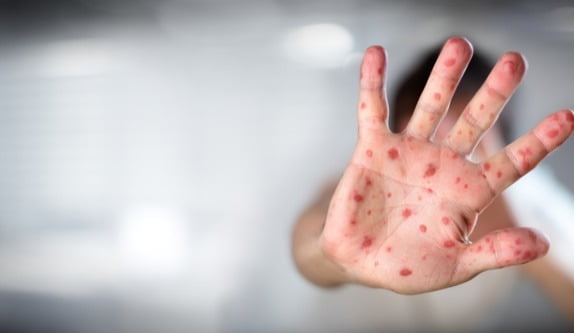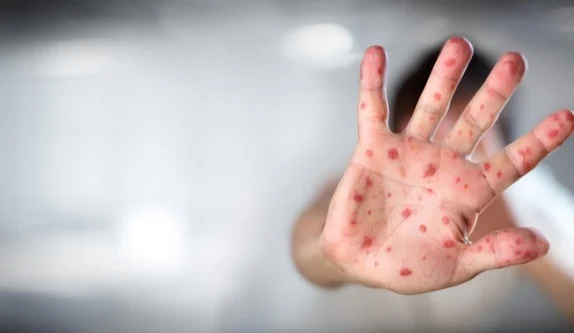- Sponsored Content
As parents with young children living in Singapore, many of us have had first-hand experience with Hand, Foot, and Mouth Disease (HFMD). If not, it will not be long before one will hear about it or experience it personally. According to the Ministry of Health (MOH), the weekly number of reported cases of Hand, Foot and Mouth disease (HFMD) has climbed to a record high this year, about 1 ½ times the cases reported last year. As of August last month, there were 30,345 cumulative cases of HFMD for this year thus far, surpassing what Singapore typically sees 20,000 to 30,000 in a year.

So, what is HFMD?
HFMD is a common and highly contagious viral illness caused by a family of viruses called Enterovirus. Both adults and children can contract HFMD, though children below five years old are most susceptible. It is endemic in Singapore, occurring year round with outbreaks often occurring in childcare centres and schools.
What are the symptoms of HFMD?
The illness usually begins with nonspecific symptoms of fever (lasts 2 to 3 days), poor appetite, and malaise. Some children may have a runny nose, sore throat, drooling or vomiting.
One to two days after fever onset, children with HFMD will develop painful sores/ulcers in the mouth and a non-itchy rash, ranging from red spots or small blisters on the hands and feet. This is the hallmark of HFMD, hence gives the disease its name. Some may also have the rash around the mouth, buttocks, arms and legs.
The illness is typically mild and self-limiting. Complications are uncommon. Very rarely do certain strain of the virus cause complications of the nervous system, lungs and heart.
How is HFMD transmitted?
The virus is spread from person to person by direct contact with the nasal secretions, saliva, stools, and fluid from the blisters of an infected person.
Symptoms of HFMD usually take 3 to7 days to show up after being infected.
Specific immunity can occur, but a second or third episode is possible from a different strain of the virus.
How is HFMD diagnosed?
HFMD is diagnosed in the doctor’s office based on the history and unique appearance of the rash and mouth sores that are characteristic of HFMD. Laboratory testing is unnecessary.
What is the treatment for HFMD?
Most children with HFMD are relatively well and active despite their illness.
As HFMD is a viral illness, the treatment is supportive and is aimed at easing discomfort.
Pain due to mouth sores and discomfort due to fever can be simply managed with ibuprofen or acetaminophen if needed.
Occasionally, severe ulcers in the mouth can be painful and may interfere with intake of food and drinks. It is important to encourage children to drink adequate fluids to prevent dehydration. Try cold foods such as popsicles, frozen yogurt, ice cream and soft foods such as porridge, pureed fruit, and jelly.
Keeping your children and others safe from HFMD
Children with HFMD should remain at home and not attend childcare centres and schools. They should avoid any public places such as shopping malls, playgrounds, buses and trains. They should especially avoid contact with other children until all the blisters have dried up which typically takes 7-10 days from the start of illness.
The importance of maintaining good personal and environmental hygiene is the key to preventing the transmission of HFMD. These measures include
- Frequently hand washing with soap before eating and after going to the toilet.
- Covering mouth and nose with a tissue when coughing or sneezing.
- Personal articles and toys should be cleaned and disinfected.
The MOH advises that parents should consult a doctor early if they suspect their child may have HFMD. Also, informing your child’s childcare centre or school early so they can monitor other children closely and take additional precautions.
Dr Judy Schmidt is based at IMC Paediatric
Call 6887 4440 to make an appointment
International Medical Clinic https://www.imc-healthcare.com/








